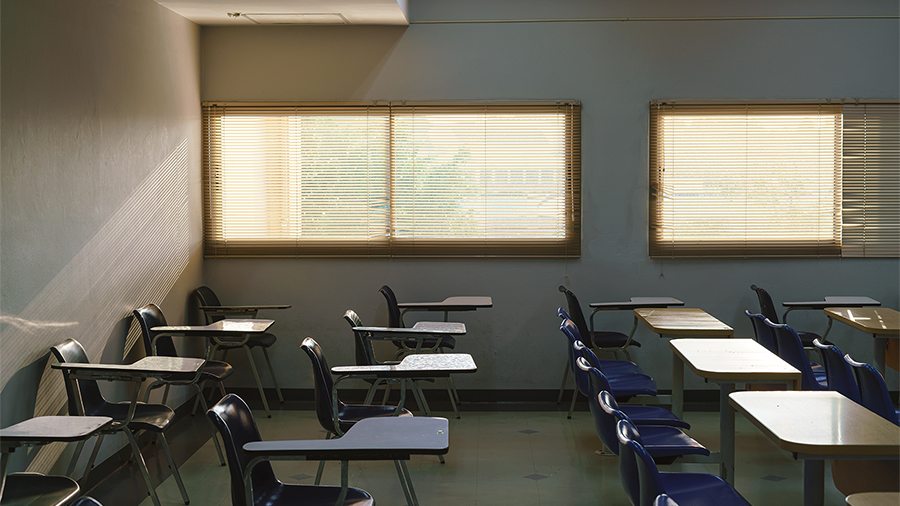
Sustaining Higher Ed is a monthly blog dedicated to helping college administrators and board trustees lead their organizations toward greater financial stability so they can stay on mission during challenging times.
In last month’s post, my colleagues Larenda Mielke and Julia Wysocki considered how colleges and universities might rethink their strategic goals and initiatives if they thought of their students more as customers. This month, I would like to start exploring whether “students are customers” also means that “colleges and universities are retailers.”
The idea that higher education is moving toward a retail model has been percolating for some time. In 2014, an article in University Business suggested that we were moving into the age of HE v3.0: The Rise of the Retail Influence on Higher Education. More recently, others have identified forces that are pushing higher education closer to a retail model:
- A changing competitive landscape. In 2019, the National Association for College Admission Counseling (NACAC) voted to eliminate provisions from its Code of Ethics and Professional Practices that had been targeted by the U.S. Department of Justice as potential violations of federal antitrust laws. As a result, the competitive landscape for college admissions has changed. Schools can offer additional incentives to students applying for early-decision admissions, such as priority in choosing housing or courses. They can continue to recruit students even after they have made a deposit at another institution. And they can reach out to previous applicants or prospects to encourage them to transfer after they have enrolled at another institution. One commentator on these changes noted that “in short order higher education may broadly resemble the cell phone industry in its efforts to get ‘customers’ to leave their current provider for a better deal!”
- The impacts of COVID-19. In 2020, the COVID-19 pandemic struck colleges and universities across the nation, forcing them to shut down their campuses and move their coursework online. With the residential aspect of the traditional college experience stripped away, two things became clear. First, for most faculty, teaching methods had changed little despite technological advances that would have allowed experimentation with new modalities before that experimentation became a necessity. Second, students were paying a lot for all the non-academic “extras.” With those extras taken away, the value proposition of what they were receiving came under closer scrutiny. Was what students were getting—even before the pandemic struck—worth what they were paying? Another commentator argues that the impact of COVID-19 on higher education may be similar to the Great Recession’s impact on bricks-and-mortar retailers: A “black swan” event that exposes underlying weaknesses in a business model and causes many businesses to fail.
- An increasing gap between supply and demand. Supply appears to be exceeding demand for many institutions—or perhaps the wrong product is being supplied. Colleges and universities continue to chase a shrinking number of traditional enrollees: Young adults who have just graduated from high school and are seeking and able to afford a residential college experience with in-person coursework. Yet there are many students for whom a traditional residential experience is not an option, including a large number of “non-traditional” students who have commitments that make a residential experience unrealistic, but could benefit from higher education for any number of reasons. With issues of diversity, equity, and inclusion growing in concern, it seems an especially appropriate time for institutions to reconsider whether what they are offering is providing what is needed for students from underprivileged backgrounds or first-generation students of immigrant families. A 2017 study, for example, found that less than one-half of one percent of children from the bottom fifth of American households by income attend an elite college and university, and fewer than 50% attend any college at all.
At the other end of the scale, a recent opinion piece in The New York Times notes that the most exclusive colleges and universities are already acting like luxury retailers, who make scarcity part of the appeal of their product. The point of the piece, however, was that there is no reason why these highly exclusive institutions shouldn’t “clone” themselves, especially since, unlike luxury retailers, they are not-for-profit institutions with missions to serve the public good by educating “the best and the brightest.” Many students who could succeed at these schools today receive rejection letters as admission rates fall into the single digits and admission becomes more like a lottery than a meritocracy. Others do not apply at all; the 2017 study referred to above also found that at 38 elite schools in the U.S.—including five Ivy League schools—more students come from the top 1% of families by income than from the entire bottom 60%.
A smart retailer would see many opportunities here: a newly competitive market, product offerings that have failed to keep up with the times, and a customer base that is being underserved—either because the product on offer doesn’t address their needs or because there isn’t enough of it. A few institutions have seen the opportunity: Arizona State University, for example, grew from 400 online enrollees to more than 30,000 online enrollees in more than 150 undergraduate and graduate degree programs in just six years, and Southern New Hampshire University now has 3,000 on-campus students and 135,000 online students. There is much more opportunity out there for institutions willing to pursue it.
In subsequent posts, we will be exploring strategies and considerations for institutions that want to take a more retail-based approach to higher education. To close this post, however, let’s address a few concerns that the idea of a retail-based approach to higher education might raise.
First, many institutions and their faculty might be resistant to the idea that they are selling a product and point out that their mission as not-for-profits distinguishes them from for-profit retailers. In response, if higher ed institutions are not selling a product, they spend a considerable amount of time and money marketing something to prospective students. That something is the students’ experience on campus or online, the faculty they will encounter, the opportunities that will be available to them, and the courses they will take—all these things together are the higher ed product. The not-for-profit mission is important but does not really conflict with a retail-based approach, especially if that approach brings the institution’s product to more student customers. It may, in fact, broaden and strengthen the institution’s service to its mission of benefiting the public good.
Second, students aren’t typical customers. They spend a lot of money on a product that then requires them to work hard to realize the most value from the product. True enough, but the very work required of student customers might make their expectations for the product they receive even higher, putting more pressure on the institution to enhance the customer experience.
We look forward to exploring this idea with you. Please send any questions or comments to me at ckim@kaufmanhall.com.







